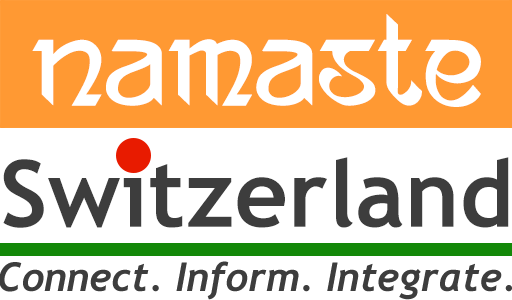Whatever your nationality, if you are interested in travelling to India, you’re certainly aware of the fact that India is huge, amazing, and has enough culture to last you several lifetimes. It is immensely diverse, bringing together the modern and traditional, poor and rich, chaotic and serene. You will get to experience spirituality, Indian architecture and culture, shopping, festivals, yoga, wildlife, art, food, music, dance, the chaos, hospitality, and, of course, Bollywood. To describe it with the usual clichés and stereotypes is impossible! And, hence, the planning and packing can be confusing. Add to that the admin processes.
Here is a detailed guideline to make life simpler before your trip.
Planning
Time: the minimum of a month would be ideal to visit and do justice to at least a few places. If you have less time, stick to one region to get a taste of India’s magic. Do keep at least two nights for each place you visit, the more the better.
Being a huge country, the climate too is more diverse and changeable than you might think. The best time to visit India is from October to March. The Himalayas stop cold winds from reaching most of India, so winters remain warm to mildly cold and summers can get very hot. The majority of India is tropical and has three main seasons; summer, winter and monsoon. The Himalayas have a different weather pattern to the rest of the country, and summertime is best to visit the northeast.
It is best to have a rough itinerary covering accommodation and transport, giving you enough room for inevitable Indian mishaps and adventurous detours.
Before your travel
If you aren’t an Indian national and do not hold an OCI card, apply for a visa well in advance of your planned trip. The rules could be different for citizens of different countries. Visit the official site – indianvisaonline.gov.in – and fill in the application form carefully.
Purchase a comprehensive health insurance plan. India is majorly a tropical country and that means tropical diseases are unavoidable. It is essential to plan your first trip to India well in advance so that you can take the necessary vaccines such as: up–to–date 10–year boosters for diphtheria, polio and tetanus; typhoid vaccines (optional), a course of anti-malarial drugs before you go, and a vaccination against travelers’ diarrhea.
Talk to your doctor about what might be necessary for you based where you’re travelling. If you run out of medicines, don’t worry as there are pharmacies everywhere and doctors in India are efficient and affordable.
What to pack
Pack light. Go local. You are likely to give in to temptation seeing the range of clothes and footwear for relatively low prices in India. You can buy everything there, but pack along some basics:
- First aid kit
- Essential medication
- Electrolytes in case it is too hot
- A couple of padlocks to keep your luggage safe
- Mosquito repellents such as spray, band or patch
- 220-volt electricity is used in India, so pack necessary transformers, converters and adapters for your electronic appliances
- Hand sanitizer
- Indian Rupees (e-payments and credit card transactions are not common yet)
- Travel and health insurance papers
Travel arrangements
If you are travelling for the first time, contact a travel agency. Book your tour only through the Ministry of Tourism or Government of India recognized travel companies. You can head to the Indian Association of Tour Operators (http://www.iato.in) for more options.
It is best to book accommodation in advance. You will have a lot of options to stay in India. A mid-budget (CHF 70-150 per night) to luxury accommodation (up to or more than CHF 2000 per night) is always better than staying low-budget.
As for the language, with 20 official languages and more than 500 dialects,, English still continues to serve as a common language.
Some useful apps that you could download are:
- Google Maps – they are not 100% accurate but do their job to a reasonable extent. I recommend that you pre-download google maps.
- Uber/Ola – a couple of taxi services that you could use in bigger towns and cities
- Swiggy/Zomato – Food delivery apps that you can use when want to order food to your room.
- Downloading apps for travelling and for hotels will prove to be useful when you travel locally
Welcome to India
On arrival, immigration check is carried out for all passengers at the airport. Foreigners arriving in India are required to furnish true particulars in the Disembarkation Card (Arrival Card) as to their name and nationality, his age, sex, place of birth and address or intended address in India.
Immigration control includes checking of Passport, Visa, Disembarkation Card, entering foreigner’s particulars in the computer, retention of Arrival Card and stamping of Passport of the foreigner.
It is best to request your hotel for their service; alternatively, use the prepaid taxi service available at the airport to avoid being conned by the taxi operators outside the airport.
Travelling in India
Indians drive on the left side of the road. It is unusual to hire and drive a car by yourself, so it is best to take advantage of the various options available to get around.
In big cities, it’s auto-rickshaws and taxis. Yes, they are old and noisy, and you might think they are ready to break down, but they present an experience in themselves and do their job remarkably well.
For travel between cities, you could fly or take the trains. India boasts one of the largest railway networks in the world. It’s better to travel 1st class or 2nd AC compartments in trains. Don’t forget to padlock your luggage to the train to avoid it being stolen!
A great option is to hire a car and driver, particularly if you’re travelling within one state for a few days.
Visiting Points of Interest
Do your research before you visit any point of interest. Know the opening times and holidays.
Dress to respect – India is largely traditional; especially at places of worship, and being secular in nature, you need to know the dress codes. Some tourist spots, like a mosque, temple or other holy places require you to dress modestly by covering your head with a scarf and taking off your shoes before entering.
Whenever you go to a Hindu temple, be sure to get some flowers before entering. It is best to leave your footwear at the shop you bought the temple offerings for a small amount to avoid being stolen, especially if you have fancy footwear. Buy special “darshan” or “VIP” tickets wherever available to avoid long queues.
What to drink and eat
Always drink bottled water and check to ensure that it is sealed on the purchase.
Food in India is as varied as its language and culture. But food anywhere in India is simply delicious. There are numerous restaurants serving a wide variety of food. Indians often share food, so if you are eating as part of a group, it’s common to order many dishes to be shared with everyone – and it’s a good way to try lots of new tastes. Mention your spice tolerance levels.
Even though street food is extremely popular and mouthwatering, do not eat at roadside eateries, unless you are going to an area specifically meant for street food. In that case, go to the stall where you can the maximum number of people. High turnover ensures that the food is being freshly and constantly prepared.
Avoid raw foods, salads and cut fruit! Go in for fruit that you can peel or cut yourself with your own sanitised knife.
Shopping
Shopping in India is my favourite thing to do next to eating. Try to buy at a fair price shop, else you will need to learn the art of haggling. The vendor will probably quote a price that is quite high and he expects you to give a counter-offer that is lower. Then, you can go back and forth and reach a price that works for both of you. Don’t forget to count your change in such shops.
India has beautiful fabrics and outfits (saris, traditional suits, kurtas, etc.). Pick something for yourself and for your home. Make sure you buy at good stores to avoid after wash disappointments. Ask around for trusted and reliable shops.
Additional pro tips
- Don’t venture alone late at night.
- Beware of pickpockets – tuck away your money and passport safely in your clothing. Handbags and your pockets are easy targets.
- Don’t accept food from strangers.
- Carry hand sanitizer, multiple-use wet wipes and toilet paper as they are not widely used.
- Don’t give money to beggars, no matter how difficult it is to see them. If you want to help, buy them some food
Ignore the staring – people will stare at you for a long time. In most cases they are just being curious, not considered rude. - Dressing – It is advised to dress according to where you are heading to. If you are unsure, check with your hotel or with a local contact. Due to the diversity of cultures and traditions across India, the way you dress can have different implications, varying from region to region.
- Don’t expect things to happen on time. Punctuality lacks. Trains won’t necessarily leave when they are scheduled, Indian friends might not arrive when they said they would and things can take a lot longer than expected.
Travelling with kids
- If you are travelling with kids, book a tour which is child-friendly.
- Forget the stroller and use a carrier instead.
- Book a big room meant for a family.
- If travelling with young children, hiring one driver for a multi-day trip allows families to keep the car seat installed and saves time on buckling and adjusting every morning.
- If you know where you are staying, inform them in advance and order diapers or nappies, wet wipes, and nappy changing mats from Amazon/online store directly to the hotel. Know that diaper changing stations are not easy to find.
- Feed kids bland but cooked food as their delicate tummies may not be able to easily digest the spices.
Enjoy your trip!
The information provided in this article provides guidelines for travelling in India. The information is provided without warranty of any kind. The author and website disclaim any responsibility or liability in connection with the use of this information as it is generalized and public transportation is subject to change over course of time for which we take no responsibility.
Disclaimer: Opinions expressed belong solely to the writer. Rules, regulations and offerings are subject to change with time. Namaste Switzerland does not undertake any financial/reputational/legal/misrepresentational or other obligation or liability. Please note: systems and laws change.












